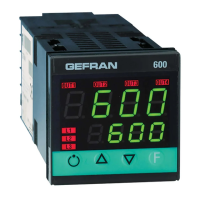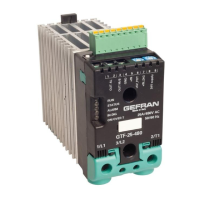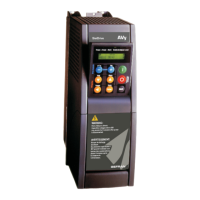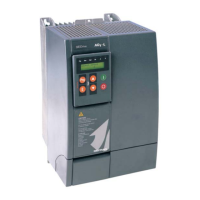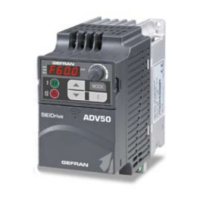Influence of Proportional, Derivative and Integral actions on response of process under control
* An increase in P.B. reduces oscillations but increases deviation.
* A reduction in P.B. reduces the deviation but provokes oscillations of the controlled variable (the system tends to be
unstable if P.B. value is too low).
* An increase in Derivative Action corresponds to an increase in Derivative Time, reduces deviation and prevents
oscillation up to a critical value of Derivative Time, beyond which deviation increases and prolonged oscillations occur.
* An increase in Integral Action corresponds to a reduction in Integral Time, and tends to eliminate deviation between
the controlled variable and the setpoint when the system is running at rated speed.
If the Integral Time value is too long (Weak integral action), deviation between the controlled variable and the setpoint
may persist.
Contact GEFRAN for more information on control actions.
Manual Tuning
A) Enter the setpoint at its working value.
B) Set the proportional band at 0.1% (with on-off type setting).
C) Switch to automatic and observe the behavior of the variable. It will be similar to that in the figure:
D) The PID parameters are calculated s follows: Proportional band
Peak
P.B.= ---------------------------------------- x 100
V max - V min
(V max - V min) is the scale range.
Integral time: It = 1.5 x T
Derivative time: dt = It/4
E) Switch the unit to manual, set the calculated parameters. Return to
PID action by setting the appropriate relay output cycle time, and switch
back to Automatic.
F) If possible, to optimize parameters, change the setpoint and check
temporary response. If an oscillation persists, increase the proportional
band. If the response is too slow, reduce it.
Multiset function, Set gradient
The multiset function is enabled in hd.1.
The gradient function is always enabled.
You can select between setpoint 1 and setpoint 2 with the faceplate key
or with digital input.
You can display the setpoint 1-2 selection by means of LED.
SET GRADIENT: if set to ≠0, the setpoint is assumed equal to PV at
power-on and auto/man switchover. With gradient set, it reaches the local
setpoint or the one selected.
Every variation in setpoint is subject to a gradient.
The set gradient is inhibited at power-on when self-tuning is engaged.
Ifthesetgradientissetto≠0,itisactiveevenwithvariationsofthelocal
setpoint, settable only on the relative SP menu.
The control setpoint reaches the set value at the speed defined by the
gradient.
Process
Variable
Time
T
Peak
SP1
SP2
SPrem
SP1
(*)
ON
ON
SP
IN1
LOC/REM
t
t
t
(*) if the set gradient is set
Twin setpoint application
(ramp + hold + time expiration alarm)
AL
Referred to current
setpoint
Setpoint profile
Setpoint < AL
Delay for trip-
ping
(*)
Absolute alarm
Reverse alarm
(*) Time set in
parameter Hy.n
Direct alarm
Time (min. or sec.)
4980291G_MHW_2500_08-2010_ENG
49 / 77
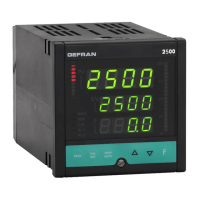
